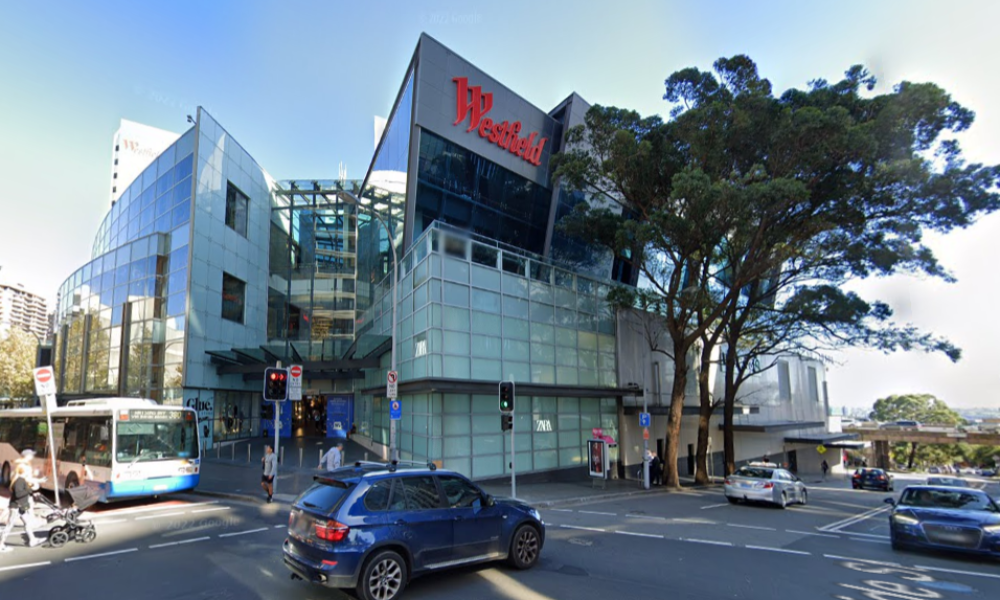In times of economic growth, employer branding assumes that all employees are discriminating consumers, to be engaged, won over and retained by employers. Iain Hopkins asks whether the employer brand still has a role in tough times

Alongside L&D initiatives, branding and marketing are traditionally the first casualties of a downturn - primarily because the return on these investments is notoriously difficult to measure.
If marketing costs are tied with the employer brand, the justification for continued spending becomes even trickier. To the uninformed, 'employer branding' may seem like marketing lingo - raising further doubts about its usefulness. The words attributed to US department store merchant John Wanamaker still linger for many: "Half the money I spend on advertising is wasted; the trouble is I don't know which half." Furthermore, if an organisation has scaled back recruitment activities, why is a focus on the employer brand necessary at all?
Anecdotal evidence suggests that some employers are already licking their lips in anticipation of scaling back all those 'nice to haves' that have been used to attract candidates to an organisation during the talent squeeze - such as flexible work hours, work-life initiatives, perks, and so on. Is the employer brand set to be another victim of downsizing?
Defining the brand
It is almost 20 years since Simon Barrow, chairman of UK-based People in Business, began selling the concept of employer branding. But only in the last five years has the concept gained traction.
Employer branding, at its simplest, is about how an employer sells itself to current and future employees. The brand showcases the company's personality and values and says: 'this is who we are and this is why you should work for us'. Note that this definition specifically mentions current employees - a fact that is frequently forgotten in analyses of the employer brand. The employer brand is undeniably at its most powerful when utilised in recruitment but it is equally useful as a retention tool. Indeed, it should mirror an organisation's talent management strategies, which for most organisations in this market are focused on retaining top performers and increasing their engagement and productivity.
All employees are exposed to the employer brand through daily interactions with the organisation through 'touchpoints' - HR procedures, their manager, executive leadership communication, general internal communication, career mobility or development opportunities. "Each touchpoint is a brand experience for the employee, and for the best companies these experiences truly reflect their brand. In other words, they deliver on their communicated promises to employees," says David Kent, managing director of The Right Group.
A common trap for many organisations is to equate employer branding to recruitment marketing. They also fail to link their external employer brand messages with internal experiences. "Our philosophy is that an employer brand is the package of functional, economic and psychological benefits provided by employment with the company - these benefits need to focus on the most compelling reasons a candidate would both choose the organisation and also why they would choose to stay," Kent adds.
Successful organisations align their employer brand promise with their customer brand to optimise their organisational performance and customer experience. They clearly state the benefits employees can expect from the organisation in return for their contribution towards the customer brand experience. Kent uses Microsoft as an example. Microsoft promises to help employees "realise their potential" and in return expects employees to "take on big challenges and see them through".
"Once defined, the employer brand needs to be managed throughout the organisation. This is not just about managing communication channels but improving internal people processes and upskilling line managers and corporate leaders to provide the right experience for employees," Kent says.
Branding in a downturn
Brett Minchington, CEO, Employer Brand Institute, says that employer branding will always exist, regardless of the external environment. An employer brand - much like a corporate culture - will develop with or without direct guidance from stakeholders. But organisations that strategically manage it will be at the mercy of two factors: the current financial position of the organisation and their competitor's position.
"The game doesn't change and neither does the process. Organisations still need to determine what they want to stand for, and determine which values and activities align with that," he says.
June Parker, general manager, LINK HR Consulting, firmly believes that employer branding remains relevant in a downturn - mainly because some skills sets are always in high demand and good employees with those skills are hard to find. "Employer branding acts as both a retention tool and an attraction tool, to retain top talent and entice employees out of other organisations who may be nervous about job stability," she explains.
In industries less affected by the downturn, employer branding can be used as an internal communications tool to reassure existing staff that the organisation is doing well and still recruiting. Bakers Delight, for example, has advertisements for new bakers that position the organisation as a great place to work, emphasising both internally and externally the good performance and health of the organisation.
Joanne Rigby, APAC marketing director for business communication experts Premier Global Services, notes that while recruitment levels may drop off some positions simply have to be filled - and good branding can lure passive candidates. She also stresses the importance of continuing to engage existing employees. "Regardless of whether we're in a downturn or not, your employees are the best brand champions you've got, so you need to be actively engaging with them, getting their input, consulting with them," she says.
What to say - and how to say it
Whatever the economic conditions, good brands should essentially stay the same but may need to be communicated more strongly in a downturn. They should continue to communicate what the organisation offers employees in terms of learning and development, career paths, organisational stability, opportunities (immediate and long-term), profitability and market positioning. A strong, well-articulated employer brand will help to retain top talent when the economy recovers.
The brand and the communication channels in which it is disseminated can also be used as a valuable tool for leaders to connect with employees and also provide the vision and progress updates that are so desperately needed in times of uncertainty. Rigby cites a recent Harvard Business Review article that stated, 'when the flight gets bumpy, you want to hear from the captain'. "There's no such thing as over-communicating to employees," she adds.
Communication and the EVP
It is far simpler to ensure effective and consistent business to employer (B2E) communication when a recognised Employee Value Proposition (EVP) is in place and also when a unique employer brand can be leveraged. Now, more than ever, this is 'business critical' if an organisation is to lead the recovery in its market.
Communication of the EVP and employer brand and - more importantly - a strategy to ensure the activation of this at every touchpoint of the employee lifecycle, is just as important as communication of the corporate and product brand, notes Alison Maidment, managing director of B2E specialists Daemon Within.
"At a time when business strategy and priorities need to be realigned this is especially necessary. Add to that the fact that many business leaders may never have led a business through a downturn, and it becomes even more critical to have clear and consistent messages for them to deliver," she says.
Maidment adds that even bad news, communicated the right way, can contribute to enhanced employee engagement. "If you have invested heavily in attracting the right talent to your organisation in the past, the last thing you want to do is see that investment migrate to the competition the minute the market picks up and the grass seems greener on the other side of the fence," she says.
Brands in turbulent times
Companies facing layoffs risk long-term damage to their employer brand, but the damage can be minimised depending on how the situation is handled. Kent urges organisations to consider what they will be known for as a result of the layoffs - that is, the way people were treated and the approach taken. Is it aligned with a strategy to retain performers within core functions or non discriminatory? How will it affect remaining staff? How will it affect the organisation's ability to re-hire when the economy recovers?
"Providing timely and accurate information to employees is critically important to manage rumour mills and misinformation that could have a long-term impact on brand reputation," he adds.
To cite one recent example, employees of Pacific Brands wanted an opportunity to work with their employer to find a way to keep their jobs. Could the outcome have been more positive if management were open about the organisation's financial position internally and then sought support and ideas from employees?
Rigby believes so. "Even if the outcome meant job losses, it would have been a collaborative and potentially rewarding process for employees irrespective of the outcome," she says.
Internally, the challenge is to communicate that retrenchment is a last resort to maintain the company's viability and protect the jobs of remaining employees.
"Organisations that have made large-scale retrenchments but are still hiring externally for certain roles need to frame these opportunities carefully. They need to communicate clearly why these key roles need to be filled and why they can't be filled internally," says Parker.
Times of crisis can help shape an organisation's reputation as an Employer of Choice, but they can also destroy a company's reputation. Maidment cites the unforgivable crime of announcing redundancies via SMS as just one example of poor practice.
"How you handle a divestment, restructure, change in reward strategy, employee relations generally will be critical to your reputation now and during the recovery. Your top talent - and let's acknowledge that that they are most likely the ones to bring you through the tough times - need your attention as much as the talent you might be reluctantly losing. A well-managed alumni program or digital employer footprint, for example, could significantly enhance your employer brand - and, in turn, your product brand and shareholder value," she says.
HR and marketing
The consensus from the experts Human Capital contacted for this article was that HR needs to work closely with marketing on the employer brand. It's also apparent that while HR has vast knowledge of the elements of the brand to be presented, both internally and externally, they generally need assistance with the tools to present that information.
"Traditionally, marketing and HR functions do not talk about strategic issues but this is essential. Consistency of internal and external messages is of critical importance in branding and building brand equity. A truly collaborative partnership between HR and marketing can actually create a company culture more effective at delivering on-strategy and greater bottom line results for the business," says Kent.
Minchington adds that if branding efforts are not a 'key strategic pillar' it just remains an HR activity. "If it's seen as a strategic pillar it gets support and investment, and it gets the HR department out there mixing with other teams. Two years ago, 75% of global branding efforts were managed by HR. This has dropped to 43% so we know that marketing and comms are starting to get involved in it. The message for HR is to go and knock on the door of marketing and comms if you want to do this properly. HR leaders cannot be expected to have all these skills sets," he says.
Rigby takes this a step further by suggesting that 'brand ownership' should extend to the whole organisation.
"Every employee has a responsibility to their brand whether they only deal with internal employees as their customers or are directly working with external suppliers or customers. Having pride in where you work makes you the best kind of brand champion and employees must feel content and empowered to do that."
Kent notes that managers generally underestimate the impact their daily interactions (including communication and behaviour) can have on an employee's employment experience. This is not their fault, he says. "Buy-in of the employer brand concept at senior leadership level first is most critical if middle/line managers are going to impact on brand equity."
When to change
The employer brand will need adjustments to stay relevant and appealing. This is important for retention of talent in core functions necessary to survive recessionary times and to position the organisation for recovery. Also, employer brands need to be competitive to attract highly skilled talent that will boost recovery. It also needs to remain feasible: for example, the top dollar salaries of 2007/08 aren't realistic so what other factors are important?
Parker suggests the employer brand should be pushed when a company has good news and a need to hire, such as a construction business winning a major, long-term infrastructure project. "It need not be an expensive exercise, but the brand message needs to be clear and consistent," she says.
Kent adds that there is endless research that supports how marketing investment in a downturn can improve an organisation's strategic position and ability to develop a competitive advantage when the economy begins to recover. "Organisations that are stripped to the bone during recessionary times not only harm their brand reputation but also have no capacity to respond to an economic upturn," he says.
Minchington uses St.George Bank as a prime example of clever use of mass media to convey a reputation as an Employer of Choice. "Clever ideas such as their grandparents' leave will appeal to the media. It required minimum outlay from them to get that story into the media, and they benefit from the general public equating their brand with good people practices," he says.
It is not an expensive exercise to reinvigorate or live and breathe the employer brand - leaders still need to engage and communicate with employees to motivate them to perform. Recent studies show that approximately 21% of the workforce in Australia is disengaged. Re-energising the employer brand is a small cost compared to the current losses businesses are experiencing in loss in employee productivity.
"This isn't just all about pretty pictures and a snappy strapline in your recruitment ads either. Despite the seemingly larger pool of talent in the market, the top talent is still the same finite pool whether it's employed by your competitor or not. It's about having reliable data about what makes your business unique in what is still a highly competitive landscape," Maidment concludes.
The essentials
To stay ahead of the competition, smart employers need to ask the following questions:
- Do we know what our unique EVP is and do we have an employer brand that reflects this?
- How do we use this? For recruitment purposes only or at every key stage of the employment lifecycle?
- How are we bringing our brand to life in terms of engaging and retaining the right talent in our business to get us through the current economic crisis?
- Do we leverage our marketing budget as well as our HR dollar?
- How do we measure and show ROI at board and shareholder level for investment in this?








